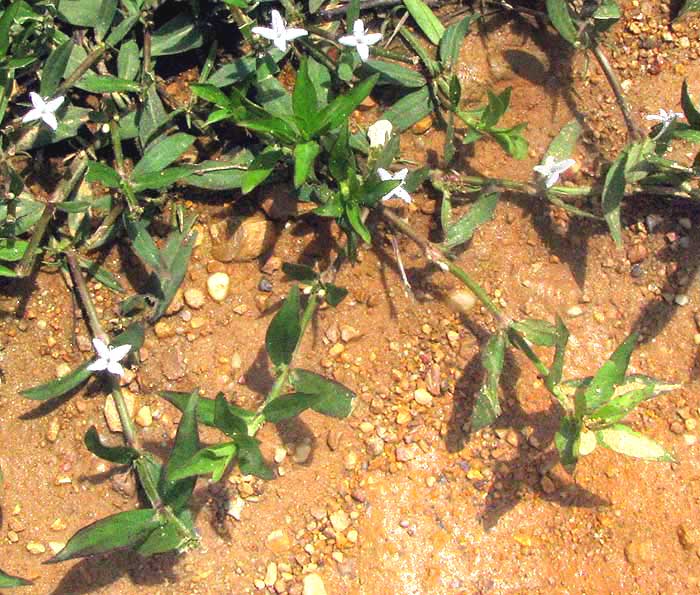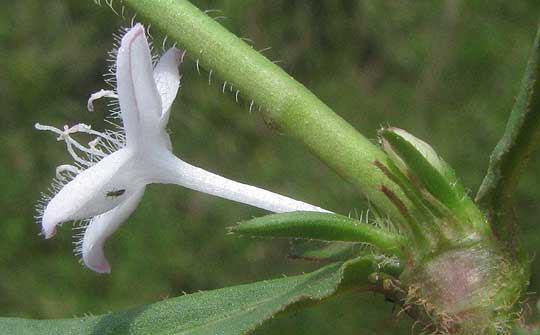Excerpts from Jim Conrad's
Naturalist Newsletter

from the the July 29, 2012 Newsletter issued from the woods of the Loess Hill Region a few miles east of Natchez, Mississippi, USA
BUTTONWEED'S LITTLE WHITE X-FLOWERS
Along a hot, sun-beaten gravel road through a bottomland woods a much branched, ground-hugging wildflower formed a mat of dark greenery about the size of a car tire. Sprinkled all through its herbage were little white flowers with four-lobed corollas, looking like flattened exes, as shown above.
A close-up side view of a blossom showing its ¼-inch long (6mm) tube topped with hairy-topped lobes, and four stamens and two slender stigmas emerging from the tube, is below:

That picture also shows features letting us know what family the little plant belongs to. Notice that two leaves arise opposite one another on the stem, instead of the somewhat more frequent single leaf, plus between the leaf bases there's a line of deeply divided leafy tissue, the stipule. When you have opposite leaves and a conspicuous, permanent stipule like this, you should think of the mostly tropical Coffee or Madder Family, the Rubiaceae, in which we also find not only coffee bushes but also gardenias and Partridge-Berries, all with opposite leaves and conspicuous stipules.
This common, tough little roadside weed is the Virginia Buttonweed, DIODIA VIRGINIANA, a native of the US Southeast and bordering states, found along the coast as far north as Connecticut, plus it's becoming an invasive in numerous other tropical and subtropical countries. There's another common, closely related and similar buttonweed, Diodia teres, but that species is more erect -- doesn't creep across the ground like this one -- plus its leaves are narrower and its stipule lobes more slender and numerous.
Virginia Buttonweed is most commonly found in wet areas such as ditch bottoms and pond edges, much in contrast to the sun-pounded gravel at the edge of this road. However, just a yard (meter) away the road edge dipped just enough for the road to drain into and we've had a rainier than normal season so far, so this must account for our plant being able to sprawl onto the gravel road. As such, it was performing important ecological duty merely by converting a glaring, extremely hot, desert-like patch of lifeless sand and gravel into a dark green community of life that bugs could munch on even as the plant itself protected the sand and gravel from erosion, and photosynthesized oxygen for us all.